So the story goes that an airline operator in Central Florida got a notification from the scale company that handles the regular calibrations at the airport that one of their baggage scales was out of tolerance and needed to be replaced... NOT repaired... But replaced entirely and had provided an estimate close to $5000 for this scope of work.
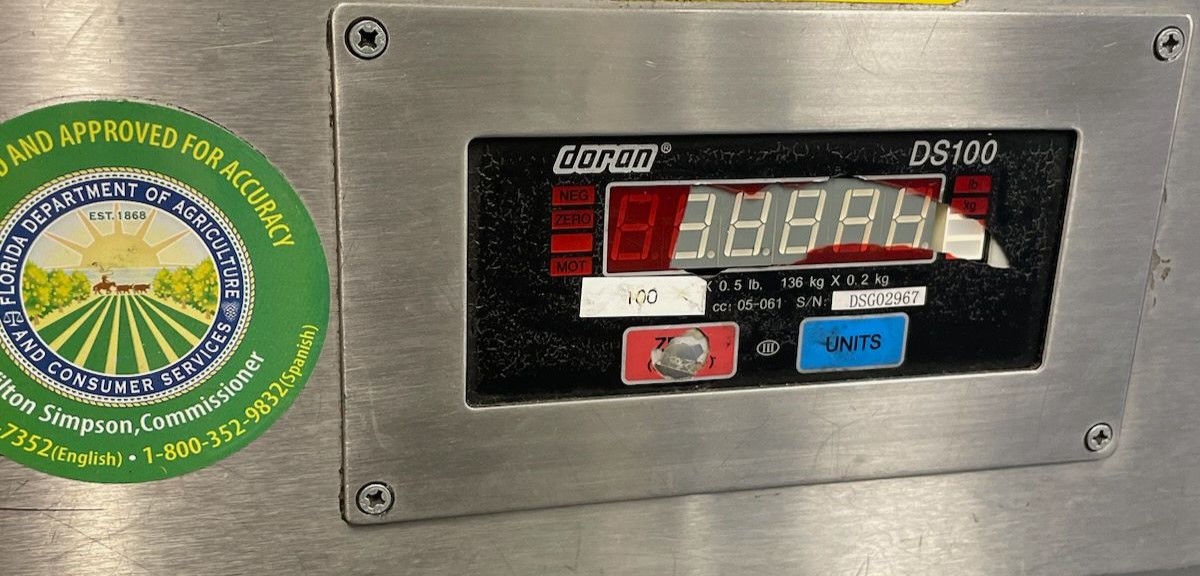
The digital displays had damaged keypads and the manufacturer of these Doran DS100 scales would not offer a replacement cover plate so the entire device needed to be replaced.
The biggest problem for the end user was that our competitors service staff had recommended that they replace the entire steel frame of the existing scale base along with the digital instrumentation with a custom sized scale base that had an 8-12 week lead time! While this may be a suitable option if the metal assemblies of the scale frame are cracked, deformed, or damaged causing issues when weight is applied (which was not the case) We did not think this was justifiable for an airline baggage scale that is built for over 1000 pounds that is typically only used for bags that weigh 50-100 lbs that uses a common weight sensor.
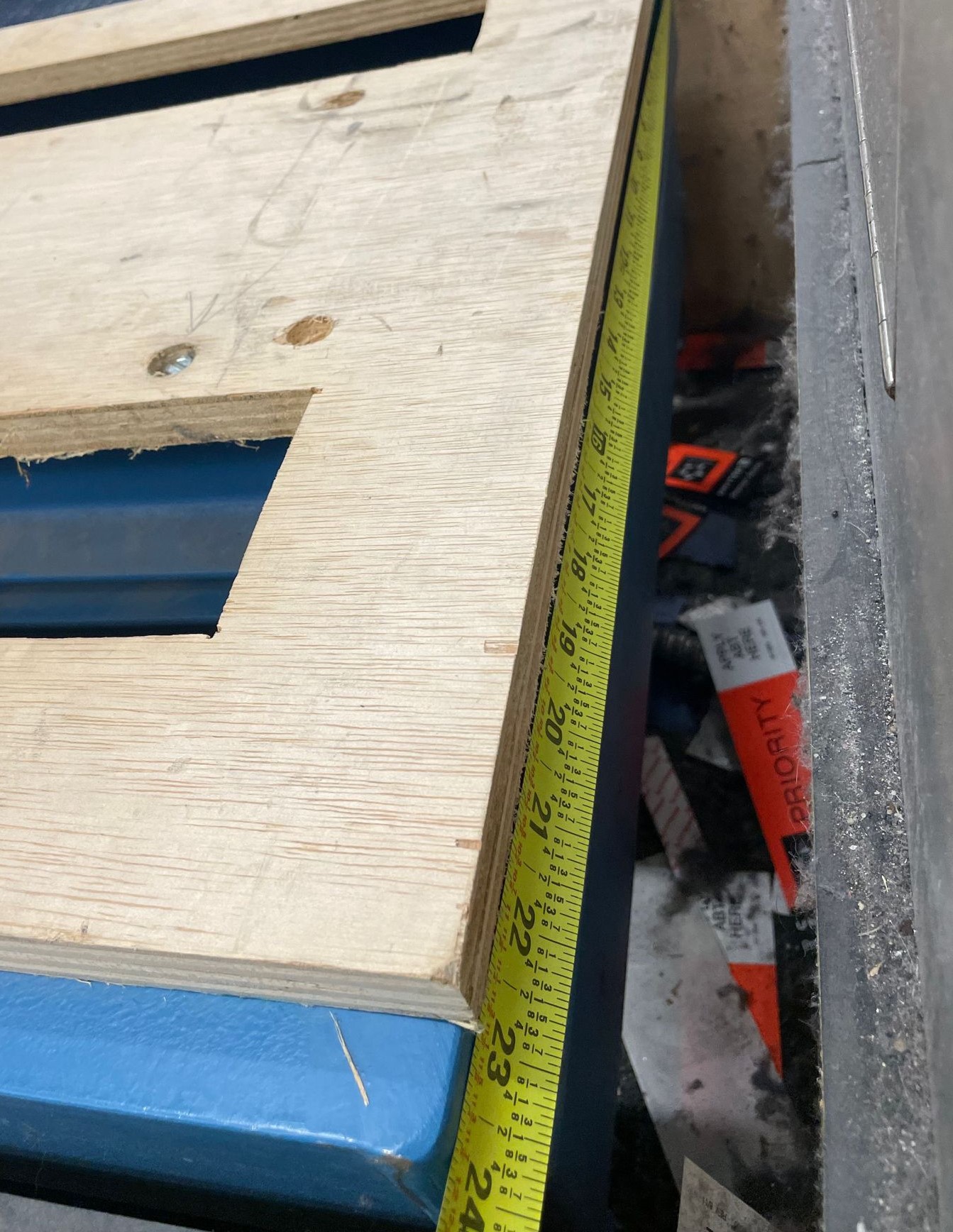
With airline baggage scales, space at the ticketing counter is always at a premium, so the scale bases are nearly always integrated closely into the design of the computer stations that the gate agents use to process your luggage.
If you were to change the dimensions of the scale base it would almost always require significant reworking of the sub-structure holding the scale base and the platter assembly built into the work stations to maintain proper clearances. This takes a simple repair job into a multi-day fabrication debacle that probably won't turn out as good as the current installation without tons of planning and the proper materials, which most scale companies aren't setup to do on a day to day basis.
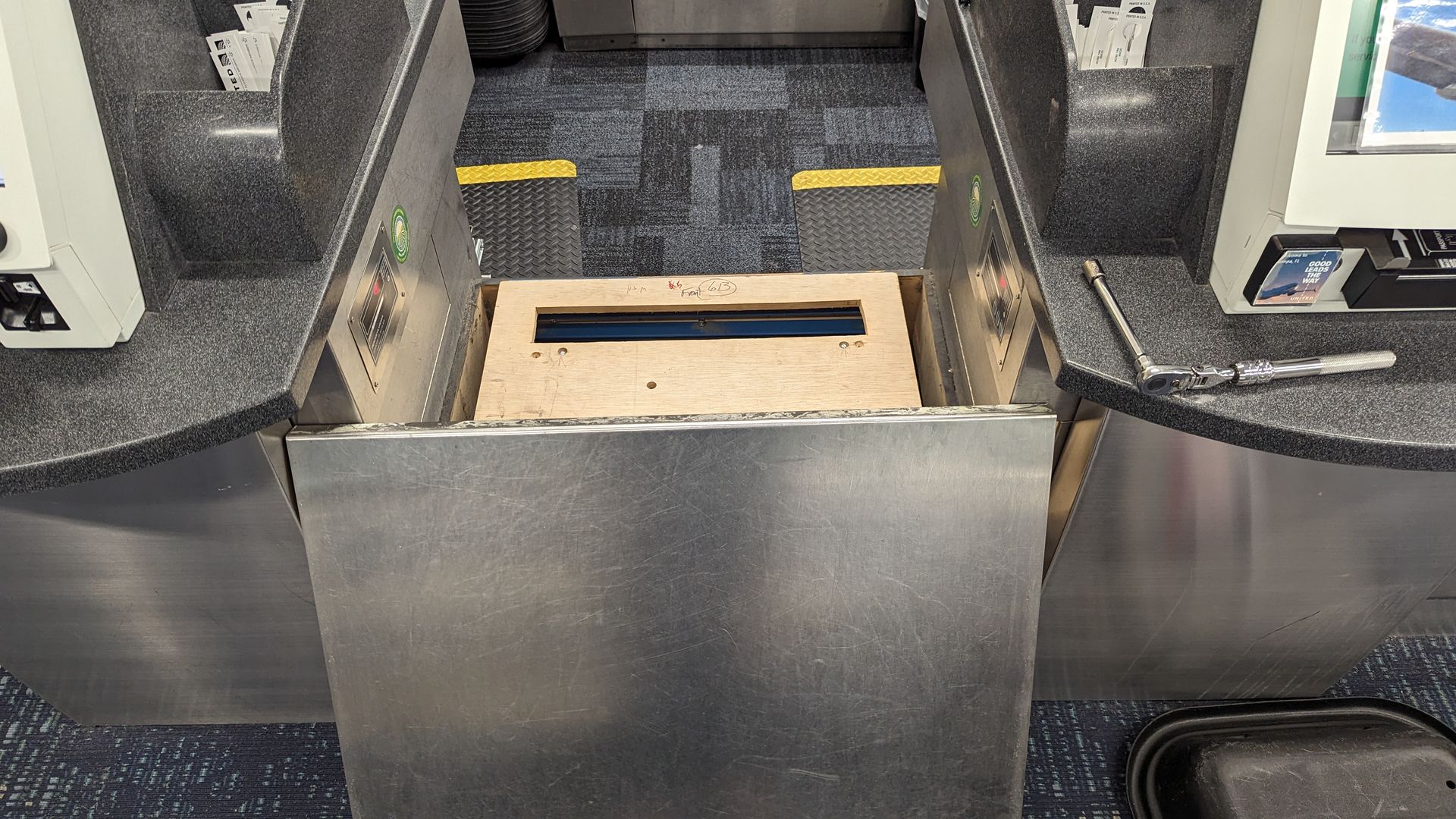
So with these factors in mind Peninsula Scale quoted them on a replacement load sensor since this particular scale base uses one of the most common industry standard single point load cells on the market. The very beefy steel substructure on this device was in perfect condition as we had suspected. This way, the end user would be able to save the cost, lead time, and installation complexity of using an entirely different scale base.
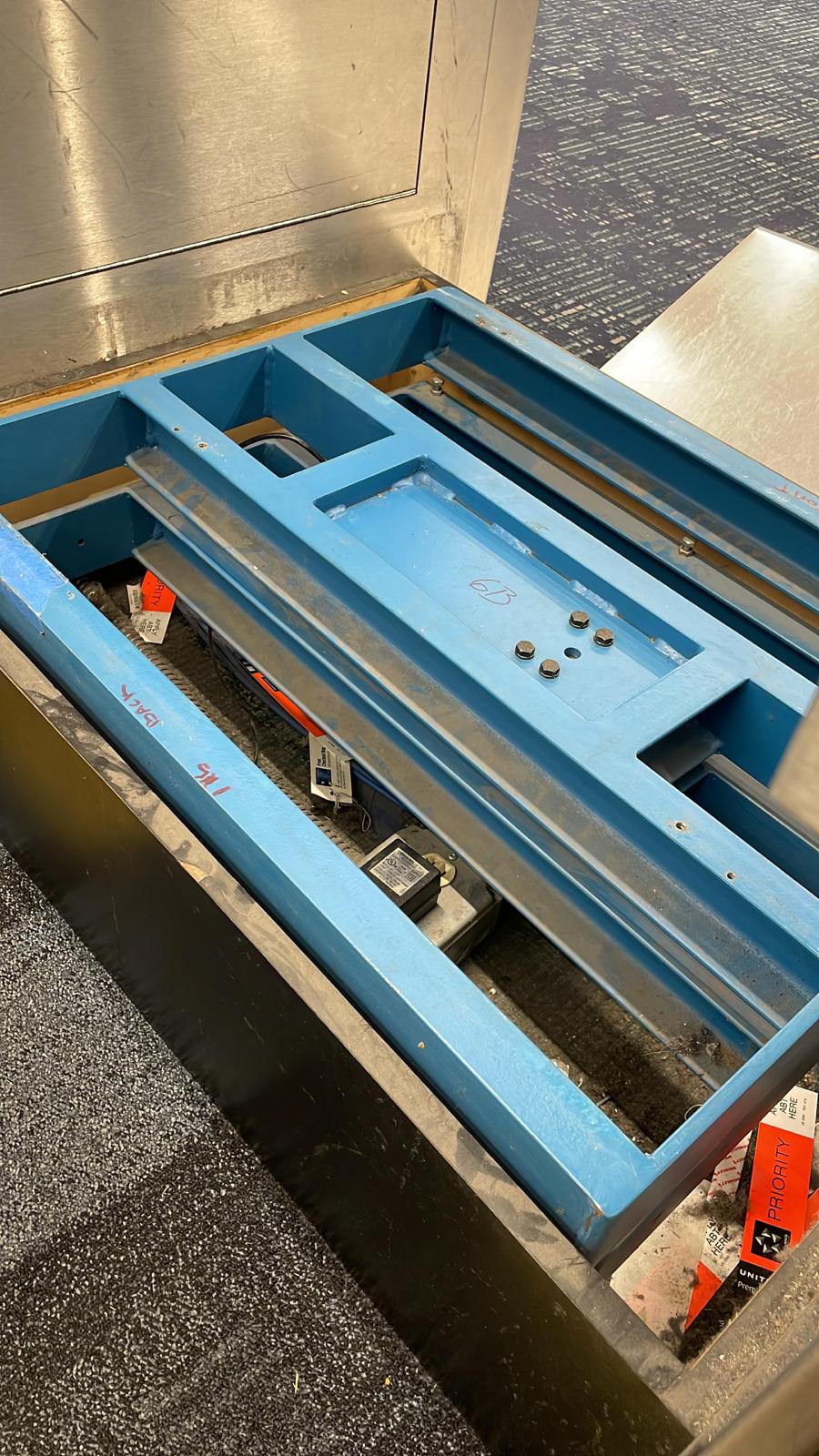
Here you can see the scale base without the plywood adapter piece for the fancy weighing platter that lines up with the counters.
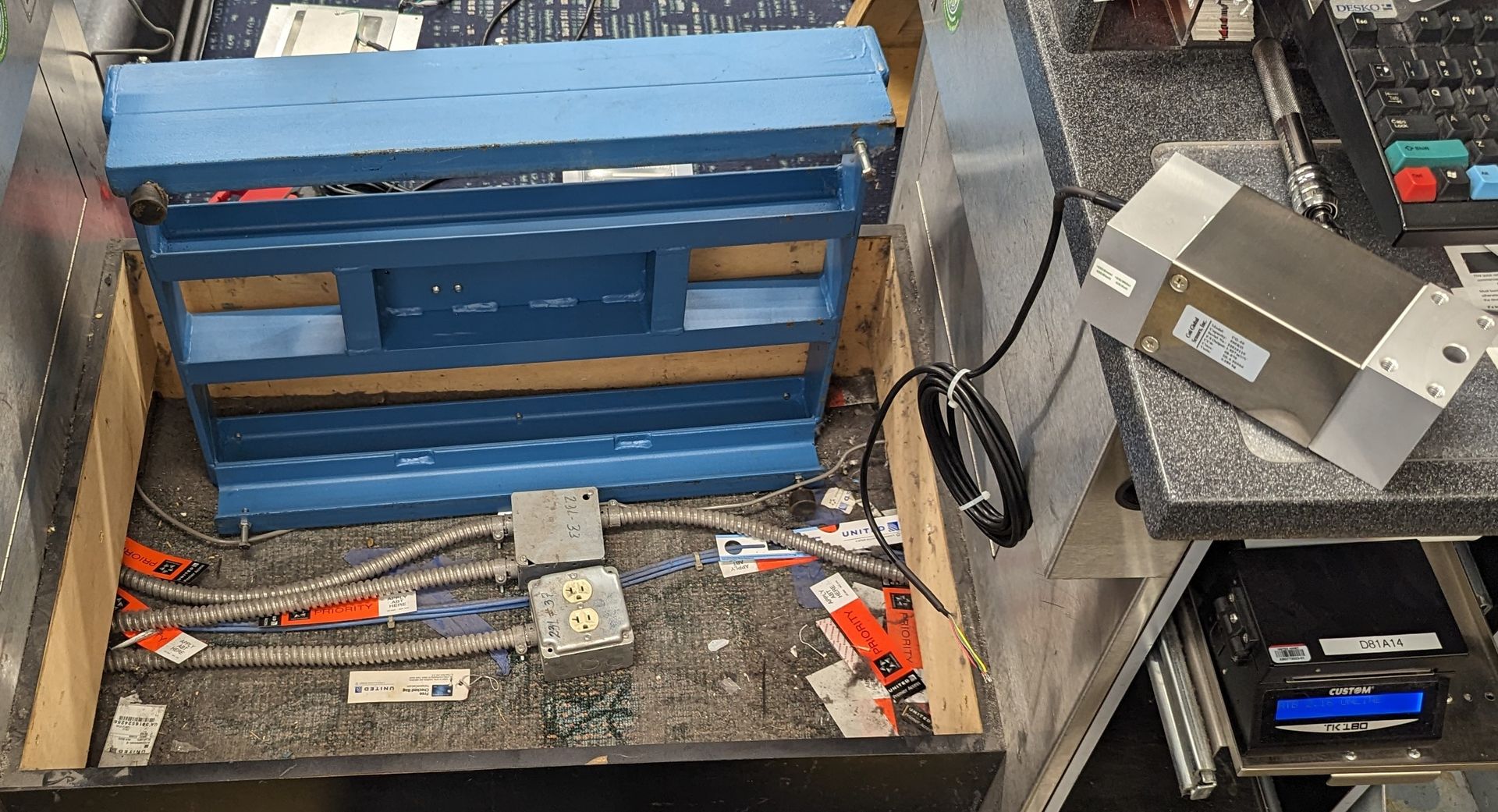
The scale base is lifted up and the replacement load sensor is on the counter to the right. We take the opportunity to clean out this area and re-route cables for the best future maintenance requirements.
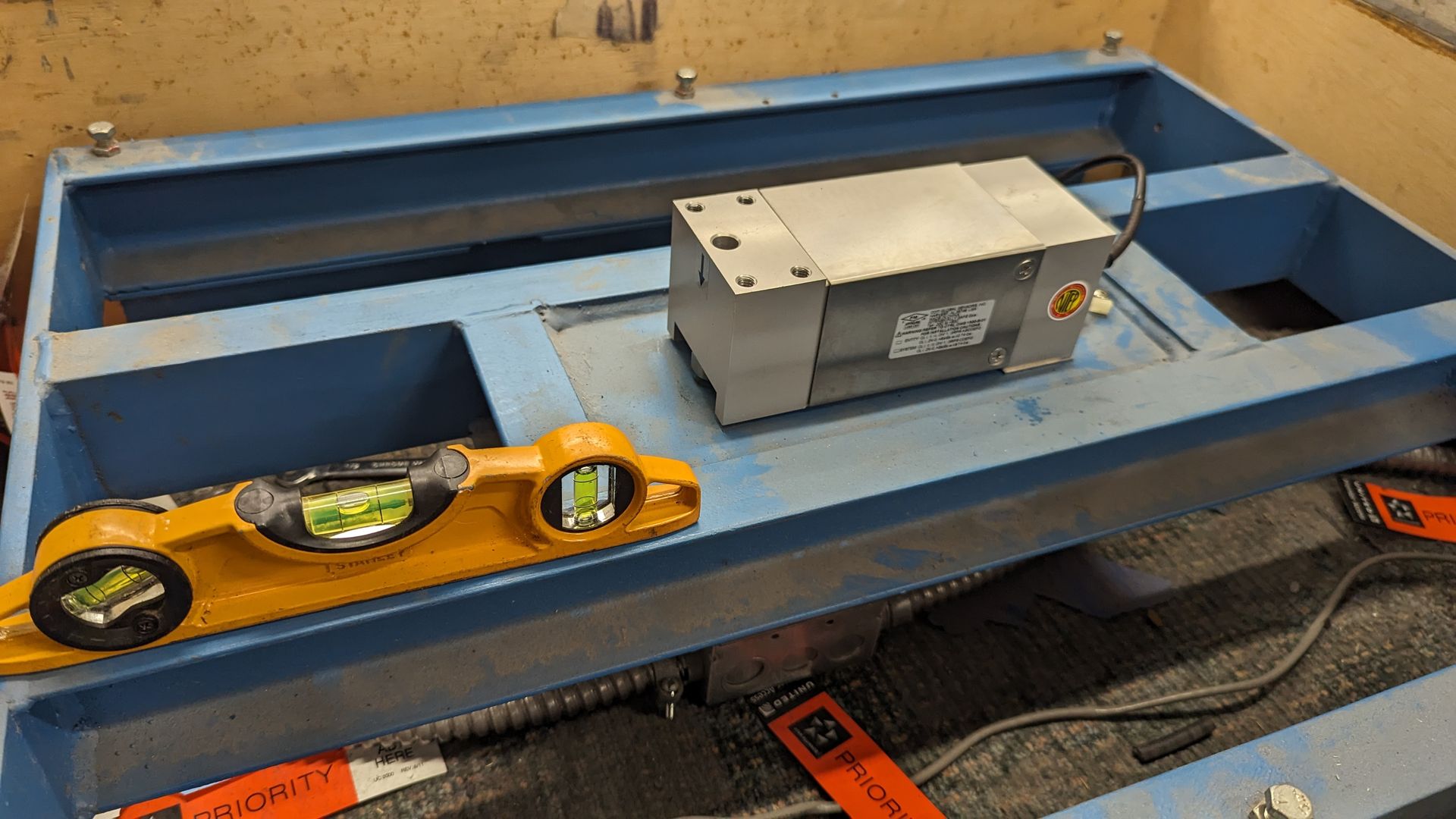
The single point 1250 style load sensor is mounted to the bottom half of the scale subframe and we are working with the levelling feet on the device to ensure that it is adjusted and setup properly. There was absolutely nothing wrong with this scale base and it was either lack of technical knowledge or greed that caused our competitor to quote this repair project as a completely new installation.
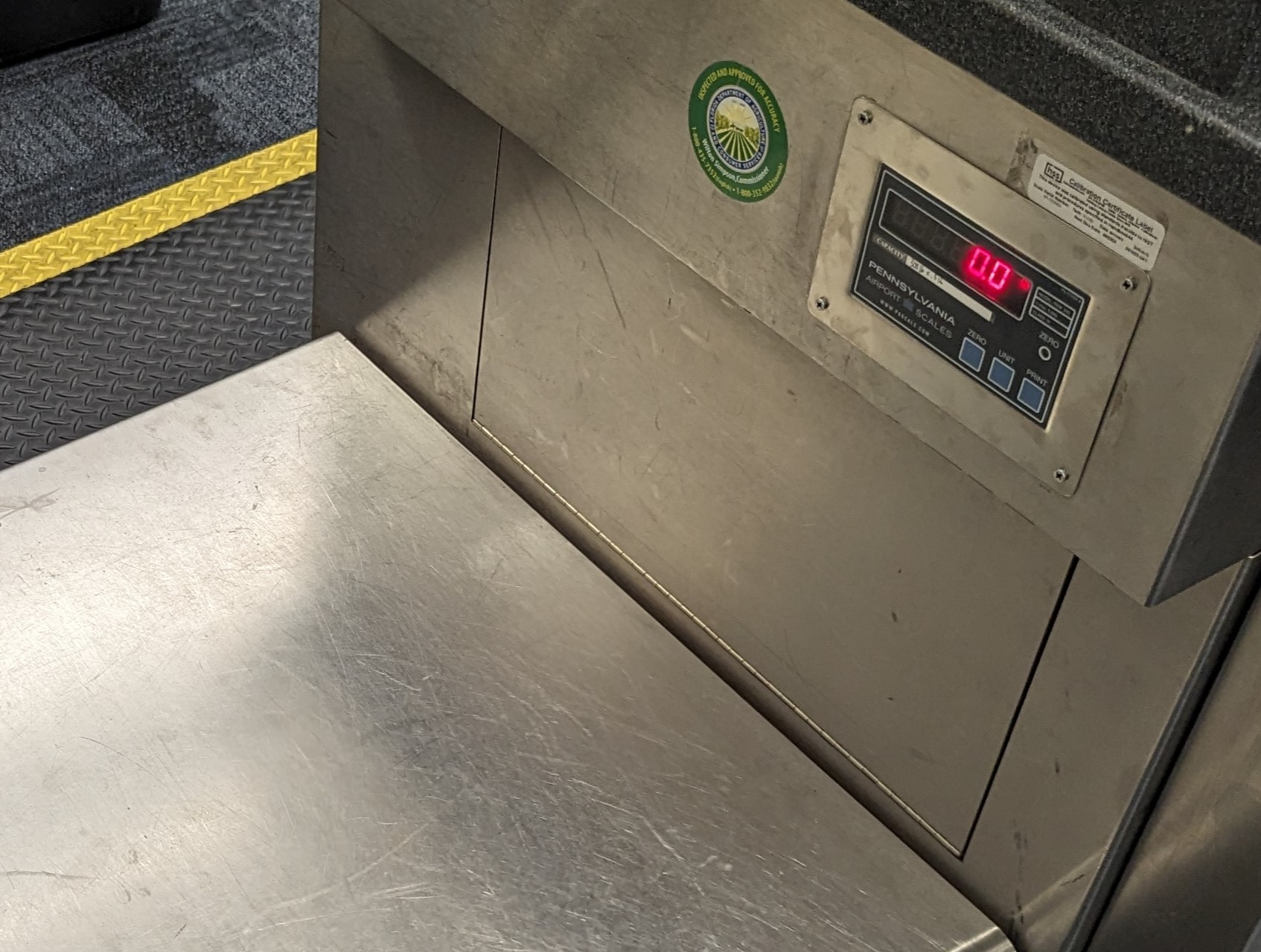
A high quality digital instrumentation system was installed from Pennsylvania Scale that has a dual display element with a master display that has the zero, unit, and print buttons along with a simple remote display on the adjacent counter.
https://pascale.com/airline-baggage-scales/baggage-scales/64-series-baggage-scale/
This digital scale instrumentation is manufactured here in the USA and is easily serviceable with technical support always available to ensure minimum downtime.
Call Us Today! to see how we can provide a quotation with the end users best interests and total cost of ownership in mind!